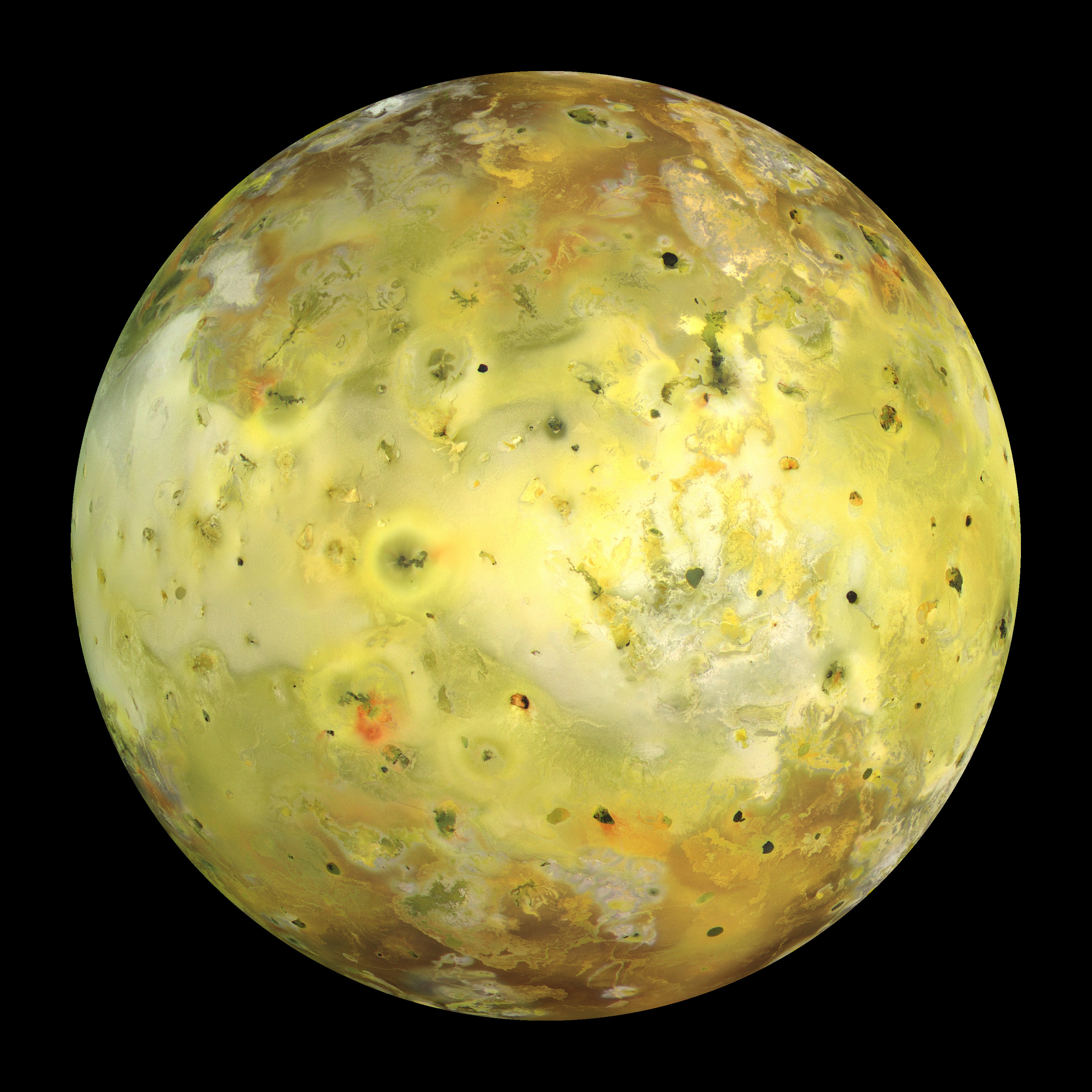You know what is thrilling? Ripping asteroids, comets, moons, and even planets to shreds.
As we saw, a tidal force pulls in opposite directions on a planet (or any other body experiencing tides). On Earth, that's good for two high tides a day. The Moon, tidally locked to the Earth, gets a tidal bulge that keeps it an ellipsoid rather than a spheroid. In the Earth-Moon system, tidal forces don't do a whole lot else. Everything is too small, and too far apart.
Instead, lets head back to our old friends the Galilean moons. Rather than Ganymede, though, or it's oft-discussed companion Europa,* we're going to be talking about Io.
Yes, it really does look like that. (Source)
Currently, Io is orbiting around 400,000 kilometers away from Jupiter--just a bit farther than the Moon is from the Earth. The innermost of the Galilean moons, Io is wracked by tidal forces, between the immense of Jupiter and the competing tugs of planet's other moons. This results in Io being the most geologically active body in the solar system. Over 400 volcanoes dot its surface, some, Voyager revealed, higher than Mount Everest. Io has suffered abuse on a truly cosmic scale.
So let's abuse it some more. Specifically, let's shrink its orbit down to around 1/12 its current size. All of a sudden, poor Io is now orbiting a mere 30,000 kilometers away from Jupiter. Obviously, the tidal force of Jupiter is going to be a lot stronger now. So much stronger, in fact, that Io is going to get torn to pieces. Once an orbiting body gets inside of a certain radius, called the Roche Limit (for the French astronomer who first theorized it), the tidal forces pulling it in opposite directions are actually stronger than the gravitational forces keeping it together.
As an object passes inside the Roche limit, gravity can no longer hold it together. It stretches out and disintegrates (Source)
There are a few different approximations for calculating this distance (once one begins taking into account factors such as the deformation of the orbiting body into account, the math gets extremely complex). However, Roche himself approximated the Roche Limit, $D_R$, as \[D_R = 2.44R_p(\frac{\rho_p}{\rho_s})^{1/3}\] Where $R_p$ is the radius of the primary, $\rho_p$ is its density, and $\rho_s$ is the density of the satellite. In the case of Jupiter and Io, this gives us $D_{R, J, I} = 3.6 \times 10^8$ meters. Orbiting closer than that, Io would get torn apart.
This doesn't happen often--unsurprisingly, Io isn't likely to suddenly start orbiting at a fraction of its current distance. But seldom doesn't mean never. When the fragments of comet Shoemaker-Levy 9 slammed into Jupiter in 1994, it was determined that it was (unusually) a Jupiter-orbiting comet, and that it had actually broken apart during a previous close pass to Jupiter in 1992, when it strayed inside the Roche Limit.
21 fragments of Shoemaker-Levy 9, imaged by Hubble two months before its collision with Jupiter. (Source)
This really exemplifies one of my favorite things about astronomy. A physical process might be totally mundane and unexciting on Earth. But once you look out at the rest of the Universe, and encounter totally different scales than what humans are used to, odds are you can see it doing something absolutely insane.


Great post, Tom! The Roche limit is an important concept in astronomy, so I'm glad you addressed it here even though we didn't have time to get to it in class :)
ReplyDelete